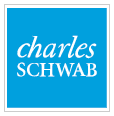by Nathan White, CIO
Equity Markets: A Year of Concentration and Divergence
This year, equity markets were dominated by a narrow group of high-growth technology companies—the so-called “Magnificent Seven”—while much of the broader market underperformed. In December alone, market breadth hit a historic low, with only 17% of S&P 500 stocks outperforming the index. This divergence was particularly challenging for strategies like ours that emphasize value factors. Value stocks, which historically excel during periods of market rotation or economic uncertainty, faced significant headwinds in 2024 as growth stocks remained dominant despite rising interest rates.
While this underperformance is disappointing in the short term, it is essential to remember that value investing tends to thrive over longer time horizons. Companies with strong fundamentals, steady cash flows, and lower valuations are positioned to benefit as market dynamics shift. Historically, periods of value underperformance have often been followed by strong rebounds.
Looking forward, we believe conditions are ripe for value stocks to regain favor. Elevated interest rates, coupled with the potential for further Federal Reserve rate cuts in 2025, could create a more supportive environment for undervalued sectors like financials, energy, materials, healthcare, and industrials. These areas of the market, which we emphasize in our equity allocations, offer attractive opportunities for long-term appreciation.
Fixed Income: A Bright Spot in 2024
On the fixed income side, our strategies delivered strong results, outperforming benchmarks in a year defined by rising yields and elevated volatility. The U.S. 10-year Treasury yield remained a standout, crossing 4.5% and attracting global capital as the Federal Reserve maintained a cautious approach to rate cuts. Our focus on quality bonds, duration management, and sector diversification allowed us to navigate these conditions effectively, providing stability and income for your portfolios.
The reemergence of a positively sloped yield curve signals a return to normalcy in fixed income markets, creating a compelling environment for bonds as both a defensive asset and a source of income. With inflation showing signs of moderation and economic growth cooling, we expect fixed income to continue playing a critical role in portfolio construction heading into 2025.
Navigating Uncertainty with Perspective
Market volatility, driven by uncertainty around Federal Reserve policy, geopolitical tensions, and economic data, was a recurring theme in 2024. While the headline-grabbing performance of mega-cap growth stocks made headlines, the broader market faced more challenging conditions. Such environments underscore the importance of diversification and discipline.
In the words of Milton Friedman, “When you stop printing money, the bad effects come first, and the good effects only come later.” The current transition from an era of easy money to one of normalized rates is painful but necessary. Value-oriented strategies, while under pressure this year, offer the potential for long-term resilience and reward.
Our Approach: Balancing Growth and Value
As we position for 2025, our portfolios remain balanced across both growth and value opportunities, with an emphasis on diversification. While the rise of artificial intelligence and technological innovation continues to reshape the growth landscape, we are also focusing on companies that offer good growth at reasonable prices. This balanced approach seeks to capture opportunities while managing risk, regardless of short-term market trends.
Thank You for Your Trust
We understand that years like 2024 can test patience and conviction. However, history has shown that maintaining a disciplined investment approach is the best path to long-term success. We remain committed to navigating these challenges on your behalf and helping you achieve your financial goals.
Thank you for your continued trust and confidence. We look forward to partnering with you in the year ahead. If you have any questions about your portfolio or market outlook, please don’t hesitate to reach out.
Model Portfolio Performance and Positioning
The Managed Income model was down about 1.9% for the quarter and up 4% for the year. The allocation remains balanced to capture income, minimize volatility and reduce risk. For the year, Managed Income performed better than long-term Treasury bonds (-6.4%) and the Barclays Aggregate Bond Index (1.3%). As mentioned previously, interest rates fell causing bond prices to increase. Due to inflation starting to firm, the market has significantly decreased its expectations of future interest rate cuts and in some cases is pricing in the possibility of rate increases in 2025. Elsewhere in the fixed-income space, the spread between safe securities and corporate and/or high yield fixed income remains narrow, making the latter less attractive. The market is pricing many of these bonds as if very little risk exists. In my estimation that is the time to be cautious. Managed Income will remain focused on protecting capital and will primarily only add risk when conditions get extreme (i.e., recessions).
Within our equity and growth strategies, the Liquidity Factor Strategy was down 6.5% for the quarter and up 12.3% for the year. This was the best performing of our subset strategies. This strategy uses a proprietary method to take advantage of pricing anomalies in stocks that are less liquid and relatively ignored by the market. The strategy is comprised of ten holdings that see little turnover. There are no holding changes for the quarter. The primary exposures remain in the Consumer Discretionary and Healthcare sectors. The Relative Strength ETF component was down about 4% for the quarter. This was primarily due to the emerging market exposure which we dipped our toes into for the first time in nearly a decade, only to get burned again. The strategy is now allocated to ETFs representing Small Caps and Dow Jones Industrials Index of 30 stocks.3.8
Fundamental 20 was down 8.5% for the quarter and was up 3.8% for the year. It was the top performing segment to start the year but then lagged as energy, healthcare and other value sectors fell behind the “Mag 7” mania. This strategy focuses on highly profitable companies that have excellent value compared to their cash flows and/or net income. We look for companies that are using their capital efficiently to make money. To start the year the changes will be made in a gradual fashion. So far, we have added three new names to the strategy: Euronet Worldwide (Financial Services), Lyft Inc (Ground Transportation), and Nu Holdings Ltd (Banks).
The Fast Movers strategy was down 6.3% for the quarter and up 3.3% for the year. This is our most aggressive strategy that actively seeks high growth and therefore can experience regular large drawdowns. The strategy is now allocated to mostly technology and communication services positions. Many of the high momentum stocks chosen by the screens experienced extremely choppy performance for the quarter and year, which is not conducive to the strategy. The strategy now holds five technology, one healthcare, one energy, one utility, one industrial, one communication services and two consumer discretionary positions. We added a position in Tesla (Automobiles), Charter Communications (Media), The current top holdings for Fast Movers are NVIDA, Constellation Energy, and MercadoLibre. As January progresses there will be additional changes made to the portfolio.
The Top Flight Model Portfolio was down 6.55% for the quarter and up 5.03% for the year. Many of the positions looked promising and positioned to benefit after the election only to significantly disappoint as the Mag 7 theme took hold once again and value and other economically sensitive stocks took a beating. We look for some “mean reversion” of this move to take place in January. Top Flight is now comprised of 25% Fast Movers, 40-50% Fundamental 20, 10-20% Liquidity Factor, and 15% ETF RS. Among our overall equity holdings, the top five performers for the first quarter were Tesla (+66%), Exelixis (+26%), Booking Holdings (+18%), Gap Inc (+14%), and Baker Hughes (+14%). The worst performers were a mixed group of Kohls (-32%), Regeneron Pharmaceuticals (-31%), Cleveland-Cliffs (–28%), First Solar (-25%) and Scotts Miracle-Gro (-23%).


